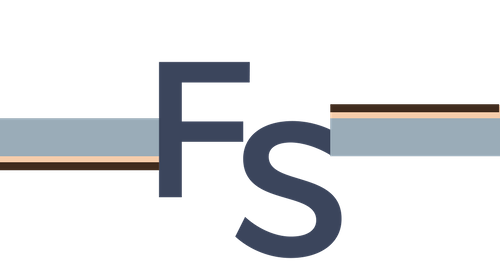The idea of focus is always important, but now it is imperative.
Somewhere between surviving the COVID-19 crisis and thriving again exists the recovery stage. Focus will be the key to optimizing performance in recovery. With fewer resources and harsh market conditions, it’s essential to pick the organization’s “Focus Few” initiatives very carefully, to realign resources, and then commit to going ALL in!
I’ll share with you an approach you can use to identify what those Focus Few should be and get your organization back on a successful path.
Overcoming Resistance to Choose
It takes courage and conviction to pick a path and commit, but this is how we will win. But most of us are too afraid to choose. What if we’re wrong?
So instead, we straddle the fence, hedge our bets and chase the many good ideas that cover all our bases, and protect us from criticism and having to defend our choices. The problem is this approach dilutes our resources, confuses our customers, and limits our ability to have a meaningful impact. Yes, this a terrible way to lead a business, but most organizations can subsidize the premium that “hedging” creates if the economy is strong.

Right now, most organizations don’t have that luxury. There is no margin available for the high cost that complexity creates, nor is there any tolerance for the drag on the organization created by too many initiatives.
The winners in this new environment will have the courage and conviction to be decisive and galvanize the team into collective action on the “Focus Few” initiatives.
Determine Your Focus Few
Your list of potential initiatives to evaluate will come from two sources. First, make sure you’ve got a clear understanding of the critical projects that are currently consuming your team’s resources. Ask for input from others inside the organization to feed the list.
Next, you’ll want to add any new initiatives you’ve identified that will drive sales and profitability based on the latest market conditions. Again, this is an excellent opportunity to get insights from various people throughout the organization.
Once you’ve got a complete list of current and potential projects ready, you can build the criteria to use to select your three to five Focus Few initiatives. Optimize sales and profitability during the recovery phase is paramount so, I’d recommend considering:
Profitability/ROI:
What’s the size of the prize of this initiative as it relates to net profitability/ROI?
Timeframe:
What is the timeline required to realize the opportunity? Shorter is better. And projects that generate revenue quicker might be valued higher than those whose payoff all comes at the end of the timeframe even if the total value is less (avoid hockey stick projections – they’re risky).
Leveraging Existing Customers:
To what extent does the project leverage the existing customer base? Getting new customers takes time and money, so give priority to any project that leverages current customers.
Leverage Existing Resource Capacity/Capabilities:
How well does the idea leverage your existing products, people, processes, and infrastructure? Play to your strengths.
Create Competitive/Market Adv or Elim Disadvantage:
How does this create a competitive advantage or eliminate a weakness?
Ease of Execution:
How well could you execute this initiative based upon our current resources, capacity, and capability? Have you demonstrated the competency before?
As a team, evaluate the list of initiatives against the criteria to select three to five that will be the priority. The weighting you give each measure will depend on the needs of your business, but following this process can provide consistency in your evaluation.
Note: Once you’ve selected your Focus Few, reassess the potential profitability/ROI. If your organization is going all in on these initiatives, you should expect to realize a higher potential than what you originally estimated.
I’ve created a Selecting the Focus Few Tool in Excel that includes formulas for weighting your criteria to make this easier for you. Just click on the download button for access.
Download My FREE Tool
I’ll send you my Focus Few Prioritization Tool.
You’ll love it!
Commit to Constrain
Michael Porter said, “if the essence of strategy is choosing what not to do, then the essence of execution is truly not doing it.“
It’s not enough to declare the “Focus Few,” you have to commit to redirecting the organization and aligning resources consistent with those priorities.
For the other initiatives on the list that didn’t make the Focus Few, decide how to address them. Determine if you want to:
Push Pause:
What initiatives do you still believe in but want to push pause on during this recovery period? I’d recommend you go a step further and identify under what conditions you would resume or reinitiate.
This keeps good ideas visible and provides a light at the end of the tunnel for the team who devoted time and energy to the project.
Kill/Divest/Exit:
What projects do you want to kill immediately? What can you phase-out, and how will you phase it out?
Realign/Reassign Resources
Go ALL IN! You can’t just talk the talk. Walk the walk by realigning teams and redeploying the organization’s resources. Your team will be much more open to new responsibilities and structure, particularly when they know they are working on the most important objectives of the business.
Sure this realignment and reassignment of resources require more agility and flexibility than most organizations possess. It’s going to be a big transition, but it’s inevitable.
Agility in resource deployment is now essential to survive, recover, and thrive. Now is the perfect time to get started.
Strengthen Your Business Coexisting with COVID

In this training course, I’ll teach you my Return To Growth model to help you identify your highest ROI opportunities that leverage your existing capabilities and get laser-focused on what you need to do to put your business in the best position to return to growth and thrive as quickly as possible!
What we focus on expands, and with fewer resources and opportunities available, we need to be extremely selective about what we ask our teams to do. By galvanizing teams around a few high impact initiatives and going ALL IN in realigning resources to execute, we can put ourselves in the best position to emerge more resilient than ever from this COVID-19 crisis.
Never underestimate the power of a committed and focused team to exceed expectations.
Please stay safe and be well.


